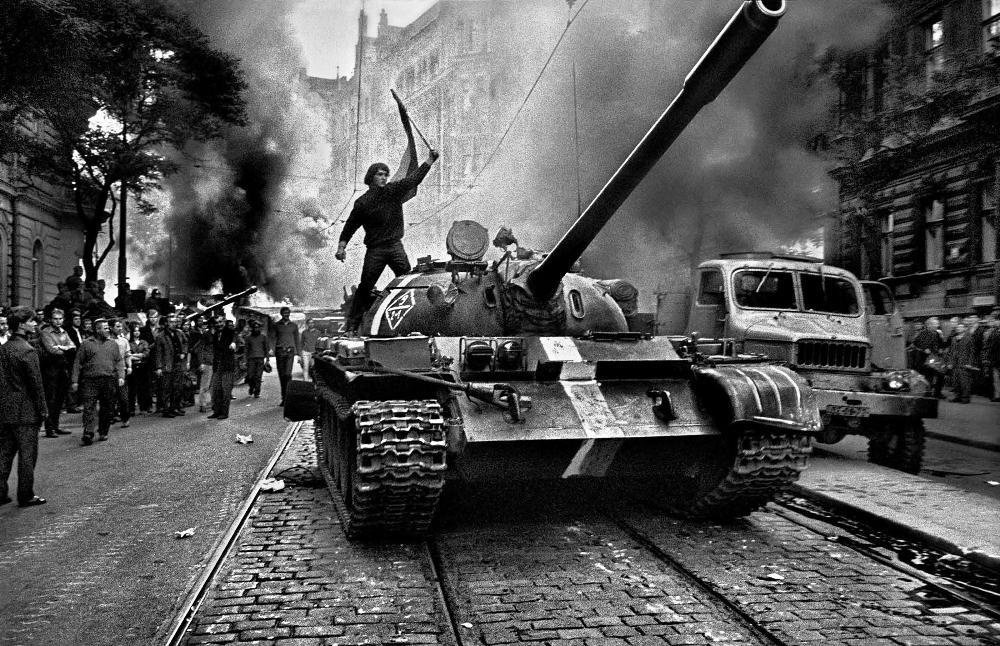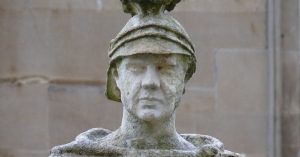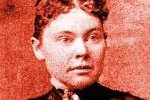“In the service of the people we followed such a policy that socialism would not lose its human face” –Alexander Dubcek 1

The Prague Spring began earlier in the year, but in August 1968, this season of reform in Czechoslovakia came to a screeching halt. The windows rattled. The cobblestone streets rumbled. The brick and stone buildings shook. Prague is a beautiful city, but it was shaken to its core. As the tanks rolled into town, protesters lined the street, standing in awe and in anger toward the military power of the Soviet Union. Where the Soviet forces had the latest of weapons, the citizens of Prague had only their words and even their fists. By the fifth week of Soviet control, eighty-two citizens were killed and hundreds more injured. The Warsaw Pact countries had made quite the impression, conveying the simple fact that they would stop at nothing to ensure the idea of “Socialism with a Human Face” never saw the light of day. That idea, conceived by one man, was the hope that people could make real the project of communism, at least in its socialist phase.2
The end of World War I marked the collapse of the Austro-Hungarian empire. From the ashes of World War I, the provinces of Bohemia, Moravia, and Slovakia formed the country of Czechoslovakia. The new Czech citizens thrived and Czechoslovakia became the most stable state in East Europe. However, the war machines of World War II started up, and Czechoslovakia was stuck in the middle of the deadliest war in human history. It was a war that left millions of the bodies of brave soldiers dead across the fields of Europe. But just prior to the breakout of all-out war, the borders of Czechoslovakia, the Sudetenland, had actually been the first external expansions of Hitler’s aggression, being annexed to Germany in 1938. The borders were now compromised, and it did not take long for Nazi Germany to gain control of the whole region. The Czech people lived under the thumb of Nazi control for six years before a savior finally appeared. Unfortunately, their savior would become the highest form of irony, but the poor people of Czechoslovakia would not find the irony humorous. The year was 1945, and the Soviet forces began their sweep of Eastern Europe to cleanse it of Nazis. The people of Slovakia saw the Soviets as their hero at the time, but the glamour of the eastern superpower soon wore off.3
The Nazis were gone, the Soviets returned home, and Czechoslovakia was ready to rebuild after World War II. The politicians of Czechoslovakia began rebuilding their cities and government. In 1947, the foreign minister, who advocated against communism, passed away, and a void was left, only to be filled with nothing less than Stalinist communists. The leader that implemented Stalin’s communism was Antonin Novotny. Upon rising to the position of President, Novotny set in place policies that included depriving the savings of farmers and working class citizens. This heinous act sparked riots against the Czech communists, but such riots only gave Novotny more power in the government. A new constitution written in 1960 further resisted the autonomy of the Slovaks, which only heightened the rage of the Slovak people. The Slovaks were desperate for change. Ascending to the first secretary of the Slovak Communist Party, Alexander Dubcek, who is a Slovak native, saw the changes that needed to be made and began turning the wheels of reform. His first year as First Secretary saw the changes of setting Slovak on equal ground with the rest of the Czechoslovak Federation on the great political stage and a revised constitution, guaranteeing the Slovak people civil rights and liberties.4

One of the finer points of Dubcek’s agenda was his roll in dividing the political power in Czechoslovakia from unilateral ideals to bipartisanship, switching control of the government from the communist party to a multi-party National Assembly. His reform would not stop there. Dubcek also revised their judicial system, making their courts independent so not to have political bias on legal matters. This political bipartisanship ensured no single party would control the country, such as the communist party had done in the past. The changes set in motion by Dubcek became known as “Socialism with a Human face.” All this great noise in Czechoslovakia drew the attention of the Soviet Union. The Russians, who bleed communism, saw these socialistic republic changes and did not share the same enthusiasm for them as Dubcek did. They believed that if Socialism with a Human face was to be implemented, the entire communist bloc of Eastern Europe would crumble. Dubcek was very careful not to provoke the Soviet Union. Idealists that went against the wishes of the Soviets were quickly swatted away. Dubcek wanted no part of the Soviet Union’s wrath, assuring them that Czechoslovakian foreign policy would remain the same, and that Russia and Czechoslovakia would remain allies. All the reforms proposed by Dubcek became known as the Prague Spring. 5
“In 1968 Prague attempted to sweep the ashes of Stalinism from the Czechoslovak road to socialism” –Robin Alison Remington 6

Czechoslovakia was one of the few countries that was able to make it is as far as it did, along the road to socialist democratization. Even so, the Soviet Union felt that they needed to intervene. On August 20, 1968, the Soviet Union, along with the aid of the Warsaw Pact countries, invaded Czechoslovakia and marched straight for Prague. The Soviet Union made sure that Czechoslovakia would be an example for the other countries that planned to partake in democratic socialism rather than in their autocratic communism. As the large opposing force entered the country, Dubcek ordered his troops not to engage because he did not wish for any bloodshed.7 Despite Dubcek’s hope to avoid bloodshed, his citizens still sacrificed their lives in revolt against the Soviet forces. 72 Czech’s gave their lives and another 700 were injured by the brutality of the USSR.8 The Soviet’s sweep was as quick as it was thorough. In a swift move, the wings of Socialism with a Human Face were clipped and Czechoslovakia became ensnared in the same Stalinist communism they had recently tried to escape. All of the politicians that advocated for Dubcek’s system were slowly pushed out of office or prosecuted for their loyalty to Dubcek.9
As for Dubcek, he was demoted as First Secretary. In 1970, Dubcek was assigned as ambassador to Turkey, and later appointed as a forestry official to work a lumberyard in Bratislava, Slovakia.10 On top of being martyred by the Soviet Union, he was also banned from speaking to anyone outside of his immediate family without permission. For his loyalty to his country, Dubcek was beat by the Soviets and left out to dry.11 To ensure that an event similar to the Prague Spring would not occur again, the Brezhnev Doctrine was developed. This bit of legislation stated that in the event that communism or socialism was ever under threat, the Soviet Union would intervene.12
The Soviet Union once again left Czechoslovakia, this time leaving a strong Stalinist in power. However, the people made peace with that autocracy. It took a generation, but a revolution was born. A Velvet Revolution. In 1989, the people of Eastern Europe stood up against communism, and protested nonviolently against the oppressive communists in control. Poland elected its first non-communist Prime minister in decades, the Berlin Wall in Germany was brought down, and Czech protesters lines the streets of Prague. Communist leaders all over Eastern Europe began stepping down. By the end of the Velvet Revolution in Czechoslovakia, the Soviet-style communist leaders had resigned and made way for a bright future.13 The people of Czechoslovakia would have to wait another two years before the largest change would become permanent. It was not until August 26, 1992, that the Czechoslovakian parliament declared their country to be split in two, becoming the Czech Republic and the Slovak Republic. On January 1, 1993, these changes were made permanent and each were now independent states, not to be revoked again. Both countries began drafting their constitutions ensuring liberties for their people.14
After eighteen long years, Dubcek finally returned home. Hailed a hero, Dubcek was elected to be the chairman of the Federal Assembly and later to the leadership of Social Democrats in the Slovak Republic. Unfortunately, Dubcek passed away due to injuries sustained in a car accident.15 Though Dubcek had passed, the Czech and Slovak republics grew in population and in culture. Czechoslovakian history is one filled with twists and turns, invasions, political unrest, rioting, and protesting citizens. Yet the world keeps turning and the brave men and women kept fighting. Socialism with a Human Face helped pave the way for the policies of liberation that occurred after the Velvet Revolution, and shaped the nation into its current state. Like any storm in the season of Spring, the Soviet Union’s control passed and allowed each of the nations affected by Stalin’s reach to become independent and strong. The Prague Spring was now a success.16
- Fred R. Sharpio and Joseph Epstein, book of quotes (Yale University Press, 2006), 217. ↵
- World Encyclopedia, 2018, s.v. “Prague Spring.” ↵
- Encyclopedia Judaica, 2018, s.v. “Czechoslovakia”. ↵
- Encyclopedia Judaica, 2018, s.v. “Czechoslovakia.” ↵
- Encyclopedia Judaica, 2018, s.v. “Czechoslovakia.” ↵
- Robin Alison Remington, Winter in Prague (Cambridge, Massachusetts, and London, England, The M.I.T. Press, 1970), xi. ↵
- Encyclopedia of Modern Europe, 2018, s.v. “Czechoslovakia.” ↵
- Alan Taylor, Photos: 50 Years Since a Soviet Invasion Ended the Prague Spring,” The Atlantic, August 20, 2018, https://www.theatlantic.com/photo/2018/08/photos-50-years-since-a-soviet-invasion-ended-the-prague-spring/567916/ . ↵
- Encyclopedia of Modern Europe, 2018, s.v. “Czechoslovakia.” ↵
- Encyclopedia Britannica, 2018, s.v. “Alexander Dubcek.” ↵
- Encyclopedia of Modern Europe, 2018, s.v. “Dubcek, Alexander.” ↵
- Encyclopedia Britannica, 2010, s.v. “Czechoslovakian History.” ↵
- Encyclopedia of Modern Europe, 2006, s.v. “Velvet Revolution.” ↵
- Encyclopedia Judaica, 2018, s.v. “Czechoslovakia.” ↵
- World Encyclopedia, 2005, s.v. “Dubcek, Alexander.” ↵
- Encyclopedia of Modern Europe, 2006, s.v. “Velvet Revolution.” ↵



13 comments
Jacob Adams
I plan on visiting Prague sometime in the near future, and I didn’t know the people there had such an interesting past. I bet these people are very proud of there country and don’t tolerate oppression. This article had great photos that kept me engaged throughout the reading and the sources were varied and relevant to the topic.
Trenton Boudreaux
1968 was an interesting year wasn’t it? With the Invasion of Prague, the Tet Offensive, the assassination of Martin Luther King Jr, and several protests, 1968 seems to be the 60s equivalent of 2020. I enjoyed reading this article. I liked how you provide context as far back as the end of WW1 and the fall of Austria-Hungary. What I find interesting is how Czechoslovakia got as far as it did in its reform attempts, and how at the end of the Cold War, Czechoslovakia split into two pieces rather peacefully unlike the chaos that consumed former Yugoslavia.
Jakob Trevino
This was a very interesting article. It is crazy that people like Dubeck wanted change for a country so bad and yet he was shut down and his power was stripped. I was also unaware that this country was involved in trying to slow down the spread of communism. This article ended fantastic and it forced me to do some of my own research.
Nelly Perez
Prague is a beautiful place and it went through hard times. There were protests on the streets that led to 82 deaths. The Soviets were seen as a hero in 1945 when they swept the Nazis off the face of the Earth, but they were two faced. Communism was not allowed, but it became enforced when a new leader stepped in.
Noah Wesolowski
To be stuck in the middle of one of history’s deadliest wars was awful but it is what unfortunately happened to the poor Czech citizens. At first the whole area around them was conquered by Nazi Germany and then after six grueling years they were liberated by the soviet army. But later they would start to become ruled by communist leader and their country started to go down hill.
Joshua Garza
This is a great article. I love the very triumphant story told by this article of people joining together and become united as an individual country to protest against their oppressors who are the USSR at the time which at one time seemed to be their saviors in World War Two where they defeated the Germans to save the Slovenians only to forcefully rule them after.
Bianca-Rhae Jacquez
I loved your ending very much and the rest of the article is written very well. I think that Dubcek’s dedication to his country is extremely honorable. I also think that the pain that Czechoslovakia suffered under USSR is the most horrible thing ever. USSR was supposed to be their “ally” and for them to do those kinds of things to Czechoslovakia was unfair.
Claudia Sanchez
Great ending for a good article. Dubcek’s commitment to his country is astounding and honorable. Awful that Czechoslovakia had to endure such suffering a the hands of the USSR which were supposed to be their “ally.” Loved this article, very interesting to read.
Mariah Garcia
Unfortunately I only knew the surface of Communism, but didn’t know in great detail of the citizens in the Czech Republic and Slovakia. The conflicts are what was highlighted throughout history, but rarely do we talk about the kinds of issues that made these conflicts. But, what I found most interesting was Mr. Dubcek and his leadership with the people of Czechoslovakia. He was the voice for them and wanted to make better changes for his country.
Avery Mascorro
I found it surprising that even after Dubcek ordered the Czechoslovakian troops to stand down and not retaliate, the people did. It shows that Dubcek was truly influential to the public and his attempts at reform were successful.